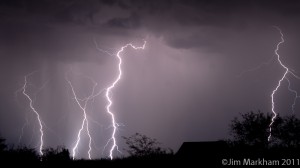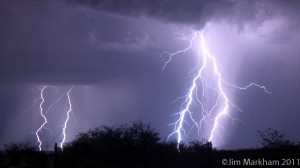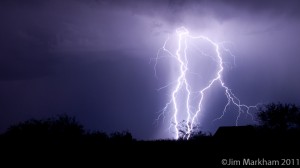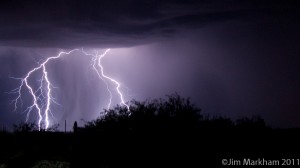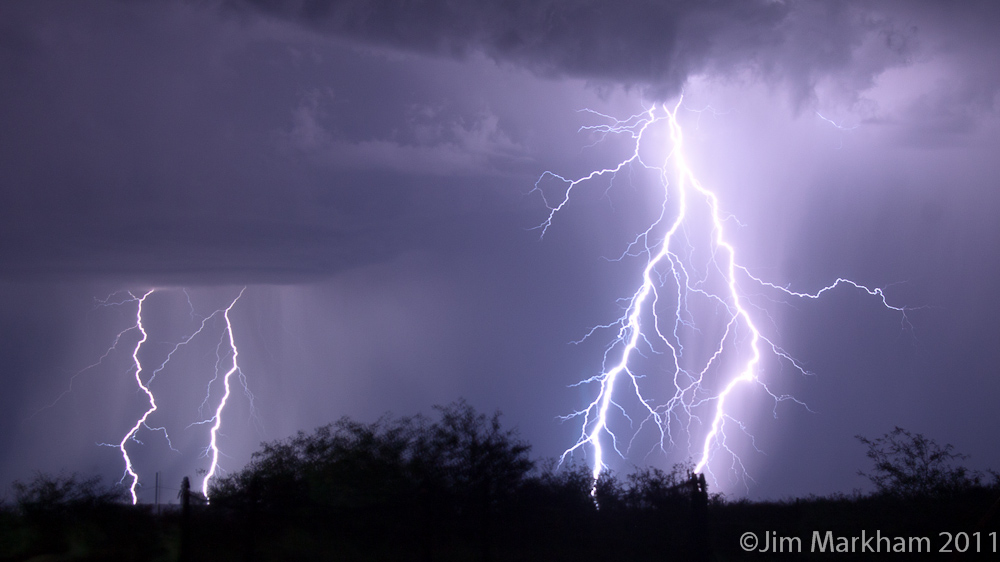
I know I’ve blogged about this before, but at the new house it’s even easier. The geographic features which precipitate the lightning out of the clouds are closer here, which means I can shoot with a slightly wider field of view, and therefore have more of a chance to catch good bolts on ‘digits’.
Assuming you have a lightning storm which isn’t currently pelting your house with rain or excessive winds, it’s pretty simple. Get out your tripod and mount up your camera. Since what we’re trying to capture is the lightning, we’re going to set our camera to ‘Manual’ exposure, which will allow us to set shutter speed, ISO, and F-stop to whatever we want. The ‘standard’ for shooting outside on old film cameras during daylight is the ‘Sunny 16’ rule, which means that for a reasonably bright sunlit scene, you should set the f-stop to 16, and the exposure to 1/ISO (i.e. 1/100 shutter speed for ISO 100 film) to correctly expose the picture. Given that lightning is bright, but not quite that bright, I generally use F/11, which is 1-stop more open than f/16, and then set the ISO on the camera to 200 or 400. This will slightly over-expose the lightning, but will give much better cloud illumination from the reflected light the lightning generates. Lastly, set the exposure to somewhere between 10 and 30 seconds. Remember, we’re setting up the ISO and F-stop assuming the lightning is actually captured in the frame. If lightning doesn’t strike within the field of view of the camera during our exposure… we get a black image, because there’s just no way the camera can capture enough light at F/11 in the dark.
Next, set the lens on manual focus, and turn the focus dial to infinity. Now since we’re not focusing on something infinitely far away, and the lens’s mark for infinity may not actually be dead-on correct, turn the focus dial just slightly away from full-stop (i.e. bring the focus just a tiny bit closer to you). Given we set the camera up for F/11, the depth of field should be pretty good for capturing lightning at multiple distances. Ok, so now that we’re ready, hit the shutter release button and stand back. Keep your fingers crossed that you get some lightning within view of your lens… and wait. At least here, there are a couple of ‘high ground’ swells at various locations which tend to pick up more lightning strikes due to their geography. Unless you’re somewhere dead-flat, the old adage about ‘lightning never strikes twice…’ is pretty much bunk, since it’s the same geographic features which will cause the excess electrical charges to precipitate down from the clouds…
Shoot lots. Then pull them into your favorite photo-editing software and adjust / crop to your heart’s content. I shot all of the images below in the span of about 15 minutes last Tuesday…
